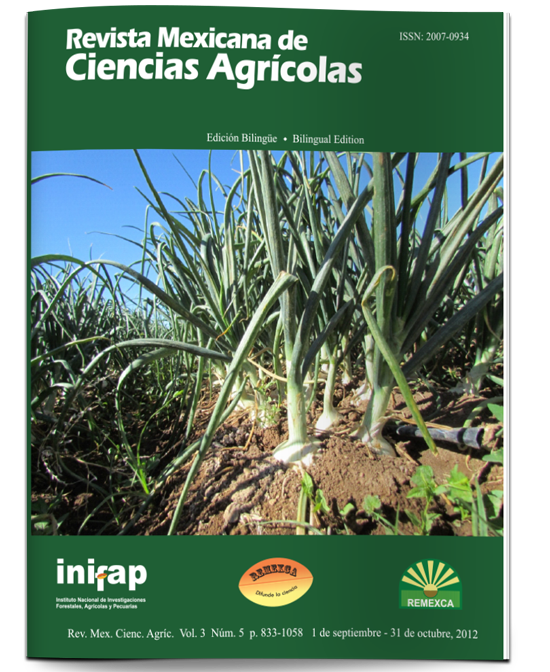The potassium nutrition affects the growth and photosynthesis of Lilium cultivated in acidic peat
DOI:
https://doi.org/10.29312/remexca.v3i5.1410Keywords:
cultivation without soil, fertilization, peat moss, nutrient solution, ornamental bulbsAbstract
Lilium (Lilium sp.) is one of the ornamental species with the highest value and is cultivated to produce fresh cut f lowers or potted plants. The incorporation of floriculture to crop technology of crops without soil requires the determination of optimum levels of nutrition for each of the required elements. In the present study, the effect of the K concentration in the nutritive solution was evaluated in order to define the concentration that permits the production of Lilium f lowers to be cultivated in acidic peat. The solutions in the study consisted of four concentrations of K: 0, 5, 10, and 20 mM. Most of the response variables evaluated, allowed us to define an optimal concentration of K as between and 10 mM, an interval that would be the equivalent of the sufficient nutrient levels. The former was observed in parameters like the diameter of the f lower, height of the plant, and total dry weight of the plant. In contrast, excessive levels (20 mM) or deficiencies (0 mM) of K cause a reduction of height and in total dry weight. The increase of the concentration of K in the nutritive solution was related to an increase in the concentration of K in all of the organs, but principally in the root. The greatest net photosynthesis registered in the young leaves was shown with the supplement of 0 to 20 mM of K, which could be because of a process regulation because of lack of carbohydrates as is suggested by less accumulated biomass.
Downloads
Downloads
Published
How to Cite
Issue
Section
License
The authors who publish in Revista Mexicana de Ciencias Agrícolas accept the following conditions:
In accordance with copyright laws, Revista Mexicana de Ciencias Agrícolas recognizes and respects the authors’ moral right and ownership of property rights which will be transferred to the journal for dissemination in open access. Invariably, all the authors have to sign a letter of transfer of property rights and of originality of the article to Instituto Nacional de Investigaciones Forestales, Agrícolas y Pecuarias (INIFAP) [National Institute of Forestry, Agricultural and Livestock Research]. The author(s) must pay a fee for the reception of articles before proceeding to editorial review.
All the texts published by Revista Mexicana de Ciencias Agrícolas —with no exception— are distributed under a Creative Commons License Attribution-NonCommercial 4.0 International (CC BY-NC 4.0), which allows third parties to use the publication as long as the work’s authorship and its first publication in this journal are mentioned.
The author(s) can enter into independent and additional contractual agreements for the nonexclusive distribution of the version of the article published in Revista Mexicana de Ciencias Agrícolas (for example include it into an institutional repository or publish it in a book) as long as it is clearly and explicitly indicated that the work was published for the first time in Revista Mexicana de Ciencias Agrícolas.
For all the above, the authors shall send the Letter-transfer of Property Rights for the first publication duly filled in and signed by the author(s). This form must be sent as a PDF file to: revista_atm@yahoo.com.mx; cienciasagricola@inifap.gob.mx; remexca2017@gmail.
This work is licensed under a Creative Commons Attribution-Noncommercial 4.0 International license.



